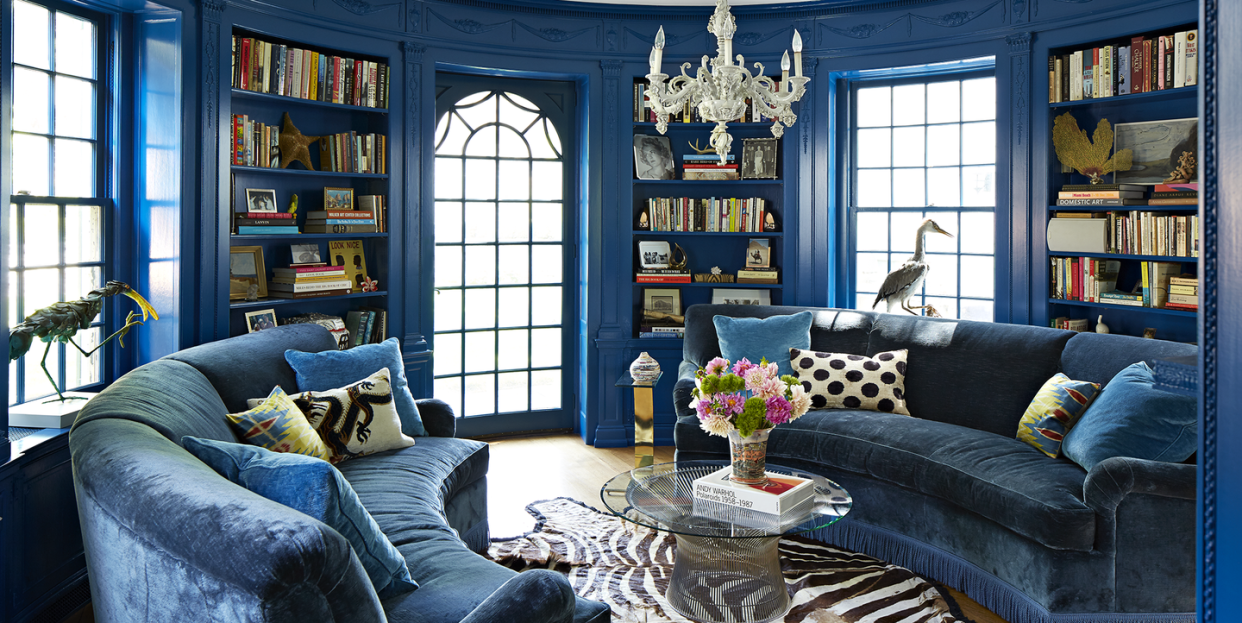What Exactly Is a Colonial Revival Home?

Colonial Revival architecture is one of the most widespread and well-known residential architectural trends in America’s history. We can trace its origins back to 1876, when the country celebrated its centennial, inspiring (some) Americans to wistfully and romantically look back to the colonial period. While the practice of colonization (and the slavery which almost always ensued) is a dark period in our past, early America represented an idyllic time to the descendents of the ones doing the colonizing. That vision of "traditional American values" resonated in a period marked by social upheaval due to the aftermath of the Civil War, the evolution of industries driving the economy, and the influx of immigrants from a troubled Europe. For the purposes of architecture, this meant a fervent revival of colonial architecture over the next several decades.

As we know, original colonial architecture included house styles introduced by British, French, Spanish, and Dutch settlers in early America. By the late 1800s, Victorian, Italianate, and Greek Revival houses were also common, which were larger and more ornate than their colonial predecessors—and their popularity certainly influenced how the Colonial Revival evolved.
The Colonial Revival movement really gained nationwide momentum at the turn of the century and was extremely popular through the 1940s, further instigated by “advances of photography and printing…[which] made an abundance of true colonial precedent available to the public nationwide,” says Andrew Cogar, architect and president of Historical Concepts, an architecture firm based in Atlanta and New York that specializes in modernized traditional homes, many often influenced by Colonial architecture and its revival.

What Defines Colonial Revival Homes:
So what do Colonial Revival homes look like? A lot like their predecessors, but bigger and fancier. If you’ve ever driven through a neighborhood with older homes dating back to the ‘20s and ‘30s, several are undoubtedly some form of Colonial Revival style.
The homes were “a fusion of previous colonial styles,” Cogar says, featuring elements from several original colonial architecture styles (primarily British and Dutch), but were influenced by not only the more ornate Victorian-era homes that mostly preceded this trend but also by the modern advances that allowed for additional flexibility not afforded to our patriot ancestors. This enabled architects and homebuilders of the early 1900s to “take a previous generation's architecture and revisit it in their current cultural and technological context, effectively reinventing it for their own immediate needs,” Cogar says.
A side-gabled roof (one where the triangular part of the roof is on the sides of the house; looking at the front door you only see shingles) was the most popular roof style, but barn-like gambrel roofs with dormers (which mostly topped Dutch Colonial Revivals) and hip roofs (ones where all four sides of the roof slope down toward the walls) were also commonly used.
The moldings along the top exterior walls (known as cornices) and overhangs that projected out from the roof were more ornate and larger, Cogar notes, and windows also got a makeover of sorts: “projecting bay windows, double windows, and triple windows never before used in the original colonial styles” were seen in revivals, he says. Since modernized kitchens of the 20th century included stoves and their placement wasn’t dependent on a fireplace, chimneys could be moved to the outside walls. Most of the houses are two or two-and-a-half stories tall, and the front doors typically boast a grander appearance than their predecessors had, with pediments and even columns accenting the entrance.

Has the Revival Been Revived?
Even though we say the Colonial Revival movement ended around World War II, homes have never stopped being built in that style (hello, subdivisions of suburban America), though references to historical precedent have been more and less obvious and other styles and trends have surged in popularity.
For Cogar, though, the significance of this architecture style is its historic origins. Unlike other architecture styles that were “a simple direct response to local environment and building traditions,” he says, “the Colonial Revival style was the intentional application of scholarly research to create a national style using historic precedent applied in a new cultural context.” Like any good comeback kid, the Colonial Revival movement took the best of what came before it and married that with contemporary style and modern lifestyles to create something entirely new, but that maintains a hint of “the good ole days.”
Follow House Beautiful on Instagram.
You Might Also Like